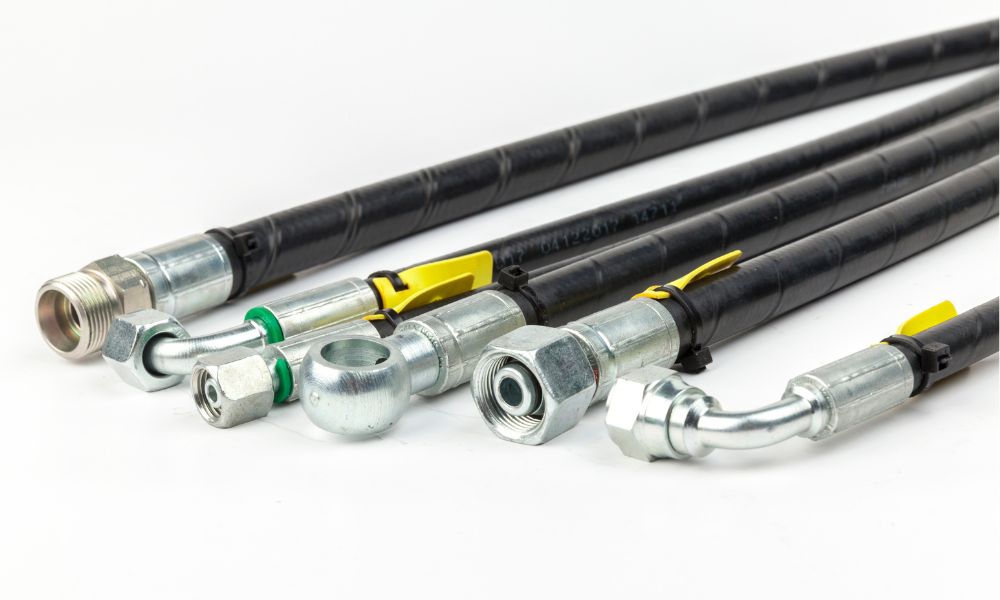An Accessible Guide to Hydraulic Hose Sizing
Do you need to replace a hydraulic hose but are unsure about the size you need? Let us help with our brief and accessible guide to hydraulic hose sizing here.
by Scot Ranney • September 26, 2023
When replacing or installing a new hydraulic hose, knowing the right size for the system is critical. Hydraulic hose sizing can be difficult, so we’ve compiled a short but accessible guide to the basics of hose sizing below!
The Structure of Hydraulic Hoses
To best understand hydraulic hose sizing and how it works, it’s wise to know the structure of a hydraulic hose. There are three components of a hydraulic hose from the inside out—the inner tube, the reinforcement layer, and the outer cover.
The inner tube is typically a thin layer of oil-resistant synthetic rubber material; the reinforcement is a thicker layer of steel wire spiral layers, stainless steel, and other materials to give the hose a sturdy shape. Lastly, the outer cover is a layer of protection and stability, with the materials ranging in strength and durability depending on the application of the hose.
Hydraulic Hose Diameters and Length
You should also familiarize yourself with the length and diameters of a hydraulic hose—the inner and outer diameter—and how they impact hose sizing. A hose’s outer diameter (OD) is the entire span of the hose cross-section and includes the inner tube, reinforcement, and outer cover.
The inner diameter (ID) is the space that the inner tube and other layers encircle and affects the flow velocity of the fluid—too small of an ID could lead to leaks and ruptures, while too big and the hose will lose flow velocity. The length of the hose is also worth considering, as the longer it is, the greater the pressure loss within the hose.
Hydraulic Hose Dash Size
Hydraulic hose operators and owners should also understand the dash size of sizes. The dash size is an important figure that’s like a shorthand for referring to the size of a hose’s ID and fitting. It appears in increments of 1/16 of an inch and is always preceded by a hyphen.
Hydraulic hose dash sizes range roughly from -2 to -32, so a -4 dash number would mean a hose with an ID of 4/16 in size or 1/4 of an inch.
How To Determine the Ideal Hydraulic Hose Size
Now we understand the basics of hydraulic hose sizing, but how do you find the ideal one for your system? You’ll need to consider first the application of the hose and what you need. First, you’ll want to identify the required flow rate—or the hydraulic system’s gallons or liters per minute.
Next, you’ll want to calculate the velocity of the hydraulic fluid within the hose—most applications call for roughly 10–15 feet per second. Then, you’ll also need to consider the maximum operating pressure of the system while accounting for the length of the hose and the fittings.
Where To Find Hydraulic Hoses
We hope our accessible guide to hydraulic hose sizing has been helpful, but where should you go if you need a hydraulic line replacement? The Hose Shop is your one-stop shop for everything you need regarding hydraulic hose systems—from replacement lines to fittings, maintenance services, and more. Browse our inventory of hydraulic hoses online or contact our staff if you need help finding the right hose for your system today.


